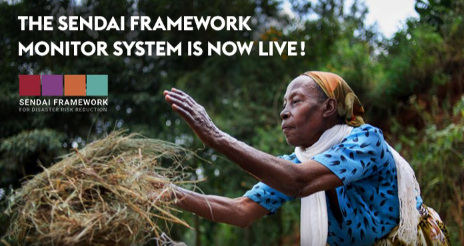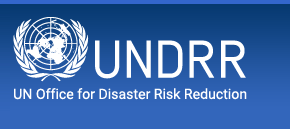- Our Mandate
- Mission and Objectives
- UNDRR in the UN
- Work Programme & Annual Reports
- Results Based System
- Work Partnerships
- Headquarters - Geneva
- SG-UN representatives for DRR
- Regional Office – The Americas and the Caribbean
- Head of the Regional Office – The Americas and the Caribbean
- What is Disaster Risk Reduction?
- What is the International Strategy?
- History of UNDRR
UN LAUNCHES MAJOR EFFORT TO COLLECT GLOBAL DATA LOSSES

By: UNDRR
This month sees the beginning of a major effort by all UN member States to systematically collect data on everyday losses experienced as a result of natural or man-made hazards as well as related environmental, technological and biological hazards and risks.
While we often have reliable estimates for mortality and numbers of people affected, until now too few governments have had the will or the means to systematically collect comprehensive data on economic losses and the damage inflicted by disasters on critical infrastructure, housing, agricultural production, livelihoods and cultural and environmental assets.
With the adoption of a global plan to reduce disaster losses, the Sendai Framework for Disaster Risk Reduction, three years ago on March 18, 2015, at a UN World Conference in the tsunami-devastated Japanese city of Sendai, UN member States committed to go even further.
The Sendai Framework extended the traditional remit of disaster risk reduction beyond floods, storms, drought, earthquakes and other natural hazards to include risks such as epidemics and industrial accidents.
The health status of people living in low and middle-income countries impacts greatly on their resilience to cope with disasters and this is now a key concern for national disaster management agencies in 48 countries where WHO has responded to 50 health emergencies over the last six months. At least half the world still lacks access to essential health services and the majority of these people live in vulnerable circumstances in disaster-prone locations.
It is important for a true understanding of disaster risk to go deeper than the available data on major disaster events collected by insurance companies and government agencies and to measure the toll taken by small-scale and large-scale, frequent and infrequent, sudden and slow-onset disasters, particularly given the influence of climate change and population growth in hazard-prone areas.
Since the International Decade for Natural Disaster Reduction (1990-1999), there has been a growing public awareness that disasters are neither acts of divine retribution nor unavoidable.
This year alone famine has been staved off in parts of Africa afflicted by drought thanks to effective monitoring and early warning systems. In recent years, fewer people are dying in major cyclones around the Bay of Bengal because of effective early warnings and timely evacuations. The death tolls in seismic hotspots have gone down where strict building codes are implemented.
The Sendai Framework is a bold statement that we have to switch from managing disasters to managing disaster risk and to do that we have to develop systems that allow all countries to measure their losses in a systematic way which will inform policy and actions designed to reduce these losses.
For several years UNDRR and partners have been working with over 90 governments to establish national disaster loss databases. This month will see that work begin to bear fruit as countries start to use the online tool, the Sendai Framework Monitor, to report on their disaster losses in 2017 including mortality, numbers of people affected, economic losses and damage to critical infrastructure.
From this will emerge a clear picture of the strategic challenges facing many countries at the local level in addressing the risk of both extreme, and small-scale recurring, events which destroy their ability to lift themselves out of poverty.
The 2017 statistics will provide a benchmark against which we can judge the success or failure of several of the Sustainable Development Goals by the implementation deadline of 2030.
A more complete understanding of where and when these disaster losses are occurring will equip national and local governments with the insight necessary to meet another Sendai target which is to have a substantial increase in strategies for disaster risk reduction at national and local level by 2020.
You cannot manage your disaster risk, if you are not measuring your losses.
The Sendai Monitor went live on March 1 and all data collected by March 31 will feed into the first progress report on the SDGs which will be presented at the UN High Level Political Forum on Sustainable Development when it meets in July.
Related Links:
Follow the UNDRR news online :
 Now we have twitter account @UNDRR Américas y el Caribe
Now we have twitter account @UNDRR Américas y el Caribe
JOIN US!
Tweets por el @UNDRR Américas y el Caribe
